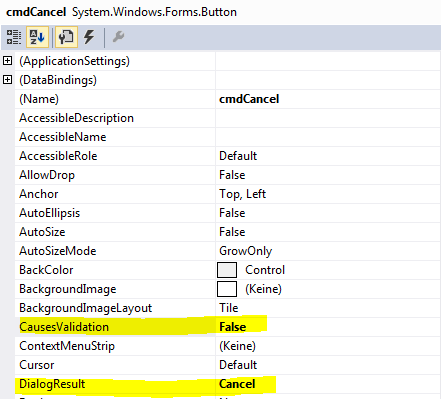I use C#. I have a Windows Form with an edit box and a Cancel button. The edit box has code in validating event. The code is executed every time the edit box loses focus. When I click on the Cancel button I just want to close the form. I don't want any validation for the edit box to be executed. How can this be accomplished?
Here is an important detail: if the validation fails, then
e.Cancel = true;
prevents from leaving the control.
But when a user clicks Cancel button, then the form should be closed no matter what. how can this be implemented?

